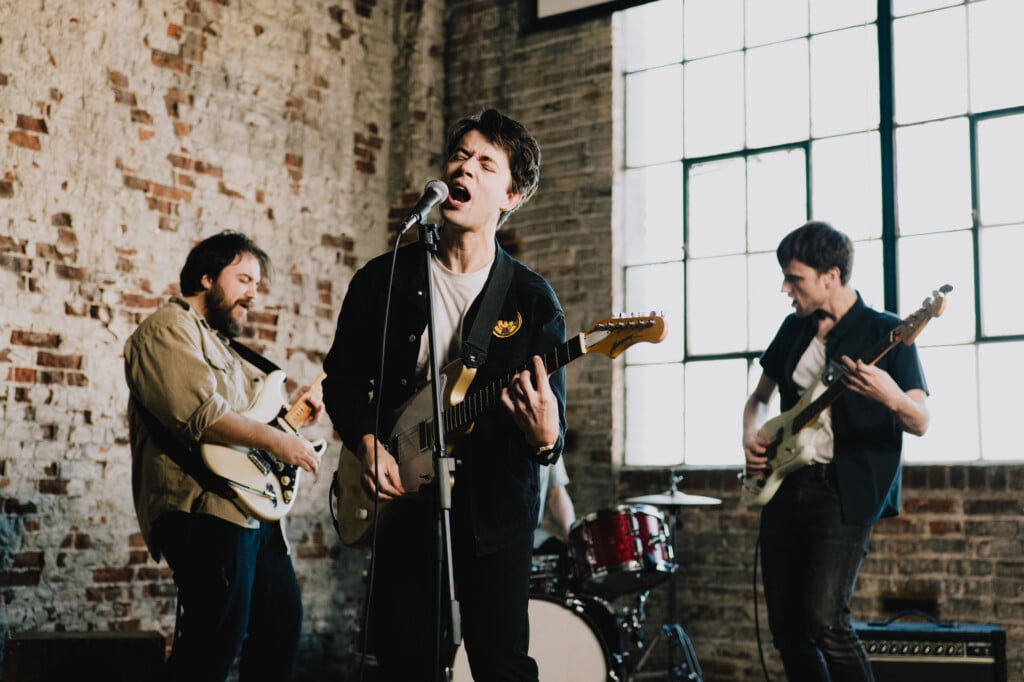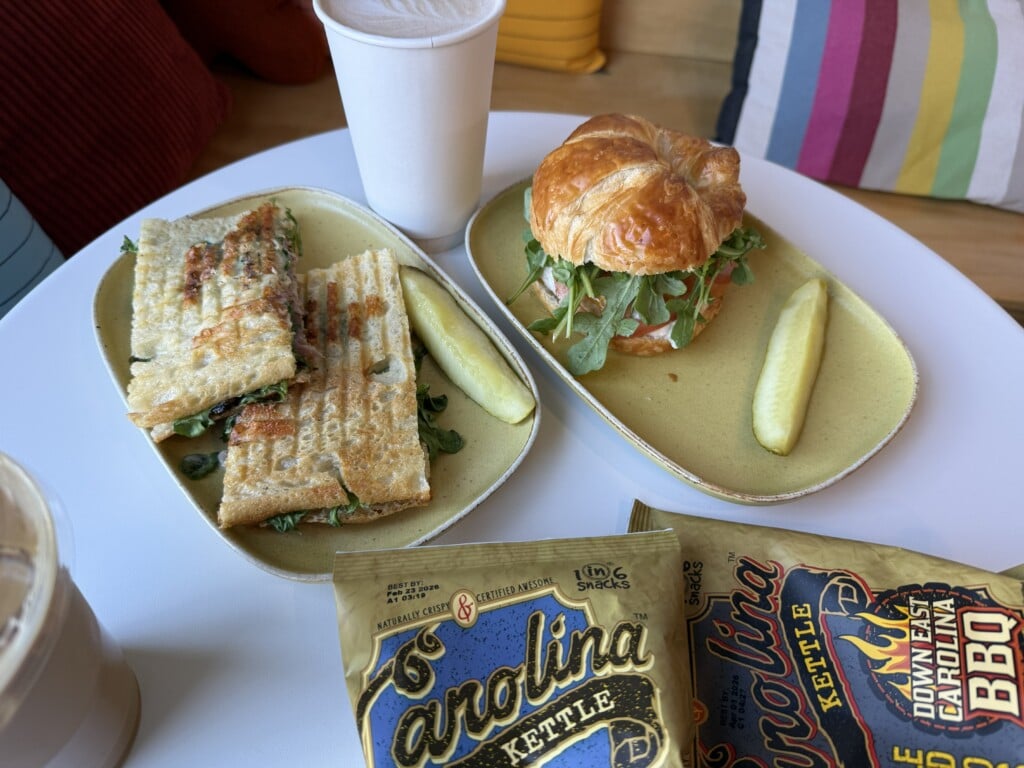Buzz Me In celebrates the legend of Record Plant studios in glorious detail
New book Buzz Me In: Inside the Record Plant Studios, out this week from Thames & Hudson, sees veteran rock journalists Martin Porter and David Goggin telling the story of the legendary Record Plant recording studios from the original New York City location to the California iterations in Los Angeles and Sausalito. Thanks to the authors’ access to the memoirs and archives of businessman Chris Stone, who co-founded the studios with audio engineer Gary Kellgren, along with hundreds of interviews of the people who made the music happen, Buzz Me In brings classic rock history to vibrant life.
Be it John Lennon or Jimi Hendrix setting the studios’ foundations in New York, building a studio for Sly Stone in Sausalito, or Stevie Wonder’s magnificent run of groundbreaking albums in Los Angeles, if you go through your record collection, you’re bound to find more than a few LPs recorded by the Record Plant, and the stories of how they came to be are positively fascinating.
We hopped on Zoom with Martin Porter and David Goggin to discuss Buzz Me In and how the Record Plant crafted the classic rock sound of the ’70s.
The Pitch: Buzz Me In is an absolute tome of a book, both in content and actual physical heft. Did you anticipate that it was going to be this massive book when you started on the project?
Martin Porter: Well, it’s half the size of what it really started out at. Just to sort of rewind, we started the book 10 years ago. Chris Stone, who was one of the co-founders of Record Plant with Gary Kellgren, was a dear friend of David’s. David was his PR, press agent, and friend for many years. I was an editor of a magazine in the recording studio business called Pro Sound News back in the ’70s, and Chris Stone was a great storyteller.
We had no idea what we got ourselves into, but we would hang out and he would tell stories, but he had one thing in mind, which was, “It can’t be my story. It’s gotta be the story of everybody who worked at Record Plant.” He didn’t want it to be about just the stars. He didn’t want to make himself famous. Gary Kellgren had passed away a long time ago. But he said, “It’s really gotta be told by the people who work behind the scenes.”
We collected a hundred interviews, did a massive amount of photo research, and fell down a rabbit hole that we didn’t get out from under until we started crawling out during the pandemic and finished writing it. Did we have any idea what it would become? Absolutely not. But thank you for calling it a tome because it, it was more of an obsession than anything else, just it turned into a book.
David Goggin: Yeah. And I think that it’s important that many times, the assistant engineers and the people who support the sessions–these incredibly celebrity-driven sessions, sometimes with 20 or 30 people in the room at the same time with Hendrix–many times those lesser-known people are the ones who know the details. [Bob] Dylan wrote a book, Chronicles, and a lot of it is people that he didn’t remember the audience or the scene 50 years ago in a small town in the Midwest, but the people that were there when he performed, remembered, and that’s true of these people.
These sessions went on for some days and their memories are, in many cases, more accurate, I think, and more detailed, shall we say, than the guys who were under pressure to make the next hit record. I used to be an engineer and a studio manager, and it gets so uptight sometimes when they can’t get the lick, and they gotta get it and they keep going and going. It’s a lot of pressure on the artist.
Martin Porter: One other point for you, Nick, is that as we found our way going down this rat hole or down this road, we were like, “How do you connect?” It all starts with Jimi Hendrix, right, and then, suddenly, how do you connect Jimi Hendrix with Stevie Wonder with John Lennon, with Bruce Springsteen, with the Eagles, with Fleetwood Mac, with Aerosmith, with Kiss, with Sly Stone? Suddenly, these disparate [artists] all came together at a Record Plant, right? I had no idea that when we started this, I would be able to connect Bruce Springsteen doing Born to Run with John Lennon retiring.
As we put the chronology together, it all started to make sense, and the history of classic rock was being told in these locations that were built to make music, to serve the artists, and to create an environment that served creativity.
The thing that I really appreciate about Buzz Me In is that, as you said, it’s the story of the people behind the scenes. It’s the story of the people who were running everything from the boards to answering the phones, to getting coffee, to getting cocaine. I mean, many of these artists are still alive. The folks in Cheap Trick, the folks in Aerosmith, et cetera. As you said when we started talking, this book is half as long as it could have been. Was part of paring it down to the stories of the people who worked there and in their words–rather than speaking with every rock and roller you could–part of the plan from the start?
David Goggin: Well, that’s a result of the National Association of Musical Merchants. Their tech awards every year honored people, and one of the first ones I was heavily involved in was with Chris Stone getting the tech award Hall of Fame achievement with Gary Kellgren posthumously in 2016. Stone died that year, so we just made it under the wire, but he was very close with Bill Szymczyk, who was the Eagles’ producer.
You can’t call these guys up, you know, but Bill knew Smokey [Robinson], had been the bodyguard for Joe Walsh and so it happened on a Saturday or Sunday before the awards, Joe Walsh and Szymczyk and I sat on stage and of course, it’s public so whatever they say is in the book. They talked about the way Hotel California came together. Then we did another one of these for another award with Jack Douglas and Joe Perry from Aerosmith, and we got some great stories there, too.
Martin Porter: I think the important message,e though, Nick, is you can’t underestimate the importance of audio to a musician. Getting a sound, accomplishing a sound ,guaranteeing a sound ,and creating a sound that makes a hit creates a very unique relationship between the artist and his or her technical support staff and the environment where that music is made.
These guys were the first tech bros. Long before there was AI and social media and whatever was going on in Silicon Valley, there was audio and Jimi Hendrix epitomized it. As somebody who could create the sounds of Electric Ladyland, it blew his mind that somebody could build a loudspeaker that would just create the ultimate listening experience. Somebody like Roy Cicala, who could capture John Lennon’s voice, that was magic. That was something even far superior to anything that they could accomplish.
Everybody talks about the amount of drug use in the studios. There was tons of drug use in the studios, of course. We talk about it. There were mirrors embedded on the consoles, right? But the ultimate drug in the recording studio was audio. The ultimate dealer, the ultimate high, was getting their sound and I think that’s something that’s been lost, but that was something that clearly John Lennon accomplished with Roy, who ran the New York Record Plant. That Jimi Hendrix accomplished with Gary Kellgren, most notably on Electric Ladyland. That Bill Szymczyk accomplished with Eagles on Hotel California.
To be able to give them the freedom, give ’em the creative opportunity to, make their music, the artist was freed from the responsibility of making that happen. They could just create, so that the relationship between the technical staff and the artist is something that was magic. If we have accomplished anything, the primary goal of this book was to tell the story of those unknowns who were very well-known and highly respected by the greatest artists of all time.
Buzz Me In contains so many stories of so many people and so many different projects. You have done a great job of conveying the importance of all of this. Still, I feel like the mobile Record Plant–the mobile recording studio recording live concerts–is legitimately one of those things where this could have been its own entire book, covering concerts and driving and back and forth across the country. As we wrap up here, what would be the story for each of you that is in the book that could be its own book?
Martin Porter: Hmm. David and I said, “Do we write about everything or do we just focus?” It could have been just Lennon in New York. Right. It could have been enough, and obviously, Eddie Kramer has written a lot about the early days of Jimi Hendrix, most of which took place prior to Jimi building his own studio at Electric Lady Studios. If I were going to answer your question about what would be its own story, I think from my standpoint, Stevie Wonder, there in Studio B in L.A.
Listen, how do you say who’s more important? Jimi Hendrix, Stevie Wonder, Bruce Springsteen, John Lennon. How do you say who’s big, but you know, the entire Stevie Wonder classic period was made in one small studio with two guys, Malcolm Cecil and Bob Margouleff, and this massive synthesizer named TONTO.
Think about Talking Book through Fulfillingness’ First Finale. They were all recorded at Record Plant. If it was me, I always thought, “Boy, Stevie in Studio B in Record Plant Third Street in L.A. would be its own book. What do you think, David?
David Goggin: Well, that may be the story because Stevie had all this stuff in his head, and this was a quad room–the quad record thing that never happened, but it was built so that he could be midway between four speakers and with these two mad men with the synthesizer that went up to the ceiling, TONTO. They could create sounds that he heard in his head before it was made possible with the sounds in that room. The room was designed by John Storyk, who’s now built probably a thousand studios around the world. He drove out in his hippie van in the ’70s and actually put that whole thing together.
It was early in his career and it was a lot of experimentation that probably could never be recreated exactly because of that community, really, between the technicians and the engineers. The technology which had just been developed. You know, a lot of things like that. But that would be one.
Martin Porter: The answer is we could have written a lot of books, but we did the stupid thing. We thought, “Could we write everything?” and the result is, as you called it, this 2.62-pound tome that we created.
Martin Porter and David Goggin’s Buzz Me In: Inside the Record Plant Studios is out this week from Thames & Hudson.








